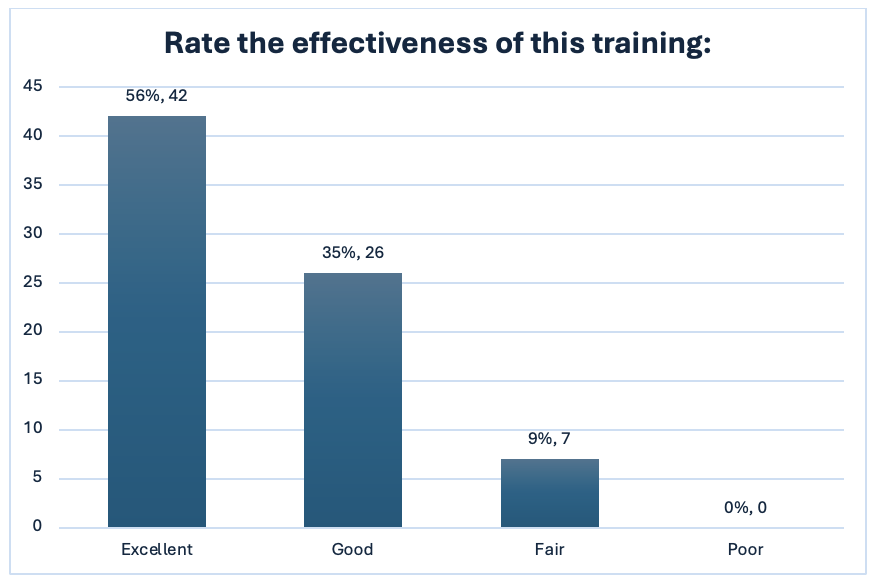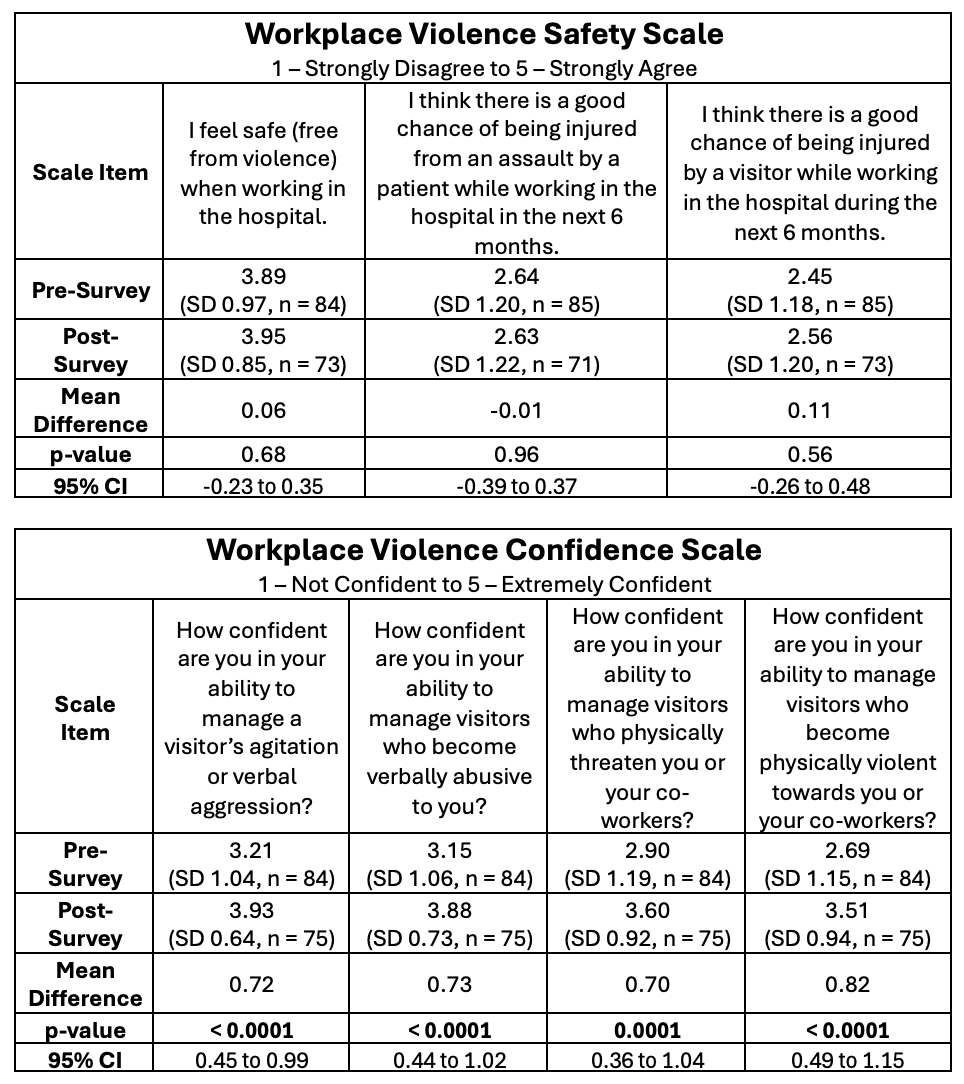Medical Education 3: Simulation
Session: Medical Education 3: Simulation
212 - Simulation Addressing Verbal Escalation (SAVE): Reducing Verbal Violence through Interprofessional Training
Saturday, April 26, 2025
2:30pm - 4:45pm HST
Publication Number: 212.6800
Simranjeet S. Sran, Children's National Hospital, Washington, DC, United States; Heather Walsh, Children's National Health System, Washington, DC, United States; Mallory Cordes, Children’s National Hospital, Arlington, VA, United States; Ananya Datta, Children’s National Hospital, Washington, DC, United States; Ayushi Jain, George Washington University School of Medicine and Health Sciences, Washington, DC, United States; Rosalyn J. Manuel, Children's National Health System, Silver Spring, MD, United States; Laura Nicholson, Children's National Health System, Huntingtown, MD, United States; Abigail Nolan, Children's National Health System, Washington, DC, United States; Haroon Shaukat, Children's National Health System, Washington, DC, United States; Gregory K. Yurasek, Children's National Hospital, Silver Spring, MD, United States; Simmy King, Children's National Hospital, Washington, DC, United States; Pavan Zaveri, Children's National Health System, Washington, DC, United States

Simranjeet S. Sran, MD, MEd (he/him/his)
Assistant Professor, Pediatrics
Children's National Hospital
Washington, District of Columbia, United States
Presenting Author(s)
Background: Clinicians are at risk of experiencing acts of verbal and physical violence during the provision of care for our patients. Unchecked, verbal escalation can lead to physical threats and ultimately physical violence, posing a great danger to our staff, patients, and families. Experience with de-escalation techniques is vital for clinicians to effectively provide care. To address this gap, we developed the Simulation Addressing Verbal Escalation (SAVE) Training with input from families. This is an interprofessional educational activity where learners focus on providing care in acute situations while leveraging their skills to communicate effectively with a distraught parent. The training consists of two scenarios with a decompensating patient (high-fidelity manikin) accompanied by a parent (trained Standardized Participant). The training reinforces the BEAR (Bond, Engage, Assess, Reinforce) de-escalation framework developed at Children’s National Hospital. Implementation began in October 2024 and will continue for approximately 6 months.
Objective: To evaluate the effectiveness of an interprofessional simulation-based training on verbal de-escalation in changing skills, attitudes, and workplace culture towards safety and confidence in addressing verbal violence.
Design/Methods: We developed a prospective survey-based study with 3 surveys in the series (pre-, post-, 3-month follow-up), which in part utilize the Workplace Violence Safety and Workplace Violence Confidence Scales developed by Gates (2006). We are obtaining aggregate, anonymous data regarding the number of monthly verbal and physical violence events for the period 1 year prior to training, during the training, and for the year afterwards.
Results: 195 interprofessional clinicians have completed the training to date, with 85 pre-surveys and 75 post-surveys submitted (Figure 1). Learners found the training to be effective (Figure 2). Preliminary statistical analysis shows significant positive increases in learners' confidence in responding to both verbal and physical violence in the workplace as captured on the Workplace Violence Confidence Scale after participation, with mean differences ranging between 0.70-0.82 on the four items and p-values < 0.05 (Table 1).
Conclusion(s): The SAVE training is effective in improving learner confidence in responding to verbal and physical violence events in the workplace based on preliminary results. 3-month follow up surveys will be sent to participants to evaluate changes over time. Workplace violence events at CNH will continue to be monitored month-to-month to evaluate change at the institutional level.
Figure 1
.png) Interprofessional SAVE Training Participants
Interprofessional SAVE Training ParticipantsFigure 2
 Learner reaction to the SAVE Training
Learner reaction to the SAVE TrainingTable 1
 Pre- and Post-Survey responses on items from the Workplace Violence Safety Scale and Workplace Violence Confidence Scale (Adopted from: Gates DM, Ross CS, McQueen L. Violence against emergency department workers. J Emerg Med. 2006; 31(3), 331–337).
Pre- and Post-Survey responses on items from the Workplace Violence Safety Scale and Workplace Violence Confidence Scale (Adopted from: Gates DM, Ross CS, McQueen L. Violence against emergency department workers. J Emerg Med. 2006; 31(3), 331–337).
